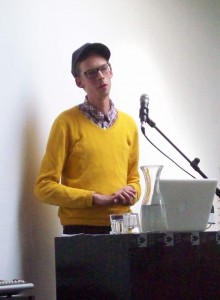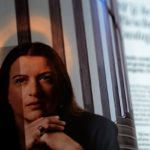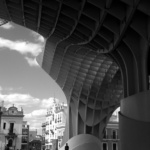'Nother try to photograph the art moghuls as icons done today. I scored an oldfashioned flashlight…
Gentrification
Visited Expodium last friday week to hear the debate named “The Bollocks!” between Anna Tilroe (Dutch art critic), Jonas Staal (politically engaged Dutch artist) en Tim Voss (German curator). Tim used to be director of ‘Kunstverein Harburger Bahnhof’ in Hamburg until recently. Since may 2010 he is director of production- and exhibition space W139 in Amsterdam.
I’ll focus on his contribution, as he touched a topic that I used to study: the mechanics of inner-city development. I liked Tim’s depreciating style and was interested to hear about his experiences in Hamburg, where artist are protesting the fact that they are being used as gentrifying agents.
The group of artists that Tim talked to us about made the painful discovery that the Hamburg authorities have consciously used their presence in the Williamsburg area in order to upgrade the neighbourhood. Artists were invited to work in an alley of run-down buildings (the ‘gaenge’ that their website ‘komm in die gaenge‘ talks about). Then small shops, restaurants, creative industries appeared. Another process of gentrification on its way, pushing out the original inhabitants by dent of the rents rising steeply. I understand why Tim is protesting the phenomenon. Yet I think that a city must have this kind of dynamics to stay alive, to regenerate it’s uses and possibilities.
In the Netherlands, these processes are often masterminded by housing corporations working together with local government.
A Dutch artist who has commented on the gentrification of her ‘hood in Rotterdam is Jeanne van Heeswijk. Nieuw Crooswijk, her Rotterdam neighbourhood, is being re-built almost completely in a period of 10 years. More than ninety percent of the social housing dwellings will be replaced by middle class residencies. The fictional figure of ‘Dwaallicht’ (= Will ‘o the Wisp) that Jeanne created commented on and facilitated discussions about this process. “Dwaallicht” became a presence, a voice for the old inhabitants, of whom 90% is not expected to return to Crooswijk after the planned massive regeneration. What I like abouit Jeanne’s work is that hers is not a voice of protest per se, she acts as mediator, communicator, go-between, ‘urban curator’ organising lucid and poetic interventions. She stimulates and creates new figures of public space, creating new meeting zones as well as remodelling existing ones.
| « Mimbo | <-- previous post | next post --> | Five minutes of fame » |
|---|








